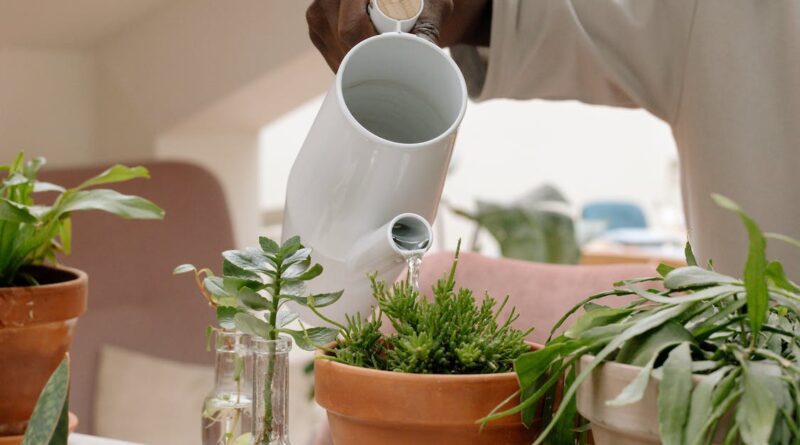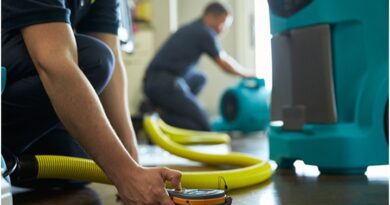Easy Ways in Watering Plants
Growing your own plants is not as easy as watching them thrive in an environment suitable for them. They also need to be tended to and taken care of. This means one of the primary responsibilities entailed with growing them includes them. Watering plants is necessary for their growth. And as they grow, plants need water for everything including photosynthesis, cooling, and the transportation of minerals and nutrients from the soil into the plant. Actually, there are no strict guidelines when it comes to watering. It is a decision that is influenced by many other factors, including the type of plant, the soil, the climate, the season, and many more. For this reason, it is easy to figure out what to do. All you have to do is check the soil.
The distinction between perfect-looking plants and wilted or dying plants can be made by using the proper amount of water. Different watering techniques use more or less water and apply it to various parts of the plant or its surroundings. One of these would include the frequent checking of the water needs of specific plants. Desert-adapted plants, for instance, typically need a lot less water than their wet-adapted counterparts. You might need to employ more than one way of watering because many gardens feature plants with varying water requirements.
If the water runs off the perimeter of the root ball, leaving the roots at the center of the plant dry, watering is useless. If you water too quickly or use too much water all at once, this may occur. Watering plants slowly is typically more efficient. Whether you are caring for seedlings, watering houseplants, a row of tomatoes, or soaking thirsty shrubs and trees, the goal is to make sure that water reaches the root zone.
When you leave water standing too long, you create an open invitation for fungus. Roots that receive insufficient water become shallow. Insects emerge in the evening to feed on water. And if you pour water from a height, half of the fluid will evaporate away. In some regions of the country where drought circumstances have led to government-imposed restrictions, poor watering practices are actually a crime. And rightly so, consider how valuable water is, whether or not you garden. Think about using rain barrels with garden hose hookups to collect water for your garden. You can purchase top-rated rain barrels or create your own.
In fact, several water-saving techniques for plants will both save your plants and the environment. We can all become better gardeners, shoppers, and environmental stewards with a thorough understanding of how to take care of these important living things.
Water Where the Roots Are
Keep in mind that the plant’s roots are the ones that need water, and not their leaves. Water is wasted when the foliage is wet, while increasing the risk of a variety of illnesses. For this reason, you have to apply water at the soil’s surface in a steady stream until the plant’s entire root ball is submerged. Keep in mind that the roots may be a foot or two deep and approximately as wide as the plant.
This is why it is preferable to water plants from below. Although individuals still typically water their plants from above, watering from underneath is more uniform, less likely to lead to overwatering, and poses no risk of nutrient loss. Additionally, you can be certain that the water does in fact reach the roots.
There are three techniques you can utilize if you opt to water your plants from below — using a saucer, soaking your plants in containers, or employing self-watering pots. If you were to use a saucer, you can place the saucer underneath the pot and fill the saucer with fresh water when it is time to water. Then, give it time to soak for several hours. Let the remaining water trickle out of the saucer after it is empty. Garden stores and plant nurseries frequently employ this method to save nutrients and maintain humidity.
If you are soaking your plants in containers, or in a tray, in the sink, or in the bathtub, fill the bottom of it first with a few centimeters of fresh water. Put your plant pots in and give them a few hours to soak up the water. The ability to irrigate multiple plants at once is advantageous. Before putting them back, allow them to dry. Lastly, there are self-watering pots which were developed, and are incredibly useful and time-saving. No more over or under-watering, as the plant takes care of it on its own. The water reservoir only needs to be refilled when it gets low, which happens around every other month.
Water Only When Needed
Some gardeners utilize automatic watering timers. They are indeed very helpful; just keep an eye on the weather and cut back on how often you use them when it is raining heavily. Both too little and too much moisture can harm plants. And it is important not to overwater them. Both water and oxygen are essential for plants. It is advisable to wait a little bit longer between waterings for most plants. This is crucial for container plants in particular. Also, it is preferable to water deeply and sparingly overall.
Water deeply and less frequently so that you can get to the roots, which are where the plant requires the nutrients, carbohydrates, and hormones found in water. A stronger garden will ultimately result from soaking the soil to a depth of 5 to 6 inches, which fosters plant growth of deeper roots. Avoid frequent, light watering since this encourages shallow root growth.
Water in the Morning
The morning is the ideal time to water your plants. In this approach, the leaves will have the full day to dry out if they become wet. When the foliage is dry, it is much more challenging for plant diseases to establish themselves. Additionally, the sun is at its weakest and the ground is at its coolest at this time of day, giving the leaves plenty of time to dry before dusk.
Evening irrigation is preferable if morning irrigation is not possible. Although the soil is warm at this time, watering plants in the evening is not advised because moist foliage can breed bacteria, fungi, and other illnesses.
Use Mulch to Conserve Water
Reduce evaporation and minimize runoff by covering the soil with a thin layer of organic mulch — such as compost, chopped leaves, chopped bark, or crushed pine needles. If the mulch is thicker than an inch, it may work against you by obstructing the roots’ access to moisture.
Thus, to prevent weeds, mulch beds and containers with several inches of decomposed material. This will assist in chilling the soil and preserving moisture. Not mulched soil should not be watered. In this situation, the force of the water may splatter plants with damp soil and result in runoff.
Use the Right Tools
Use the right tools for watering plants — a soaker hose or a more focused drip irrigation system as opposed to a sprinkler for effective root zone watering.
Key Takeaway
In the process of watering plants, you must first know their water needs and preferences to understand what the proper methods are in which you should do, as well as the right tools to use. Again, there are two different kinds of indoor plants — dry plants and moist plants. Cacti, succulents, and several other plants belong to the dry type. They do not require as much watering as others do because they prefer dry soil. Depending on the temperature of the space, watering once or twice a month may be sufficient. Incorporate the tips and ways of watering plants above, do them frequently and you will certainly grow a healthy plant in the long run.



